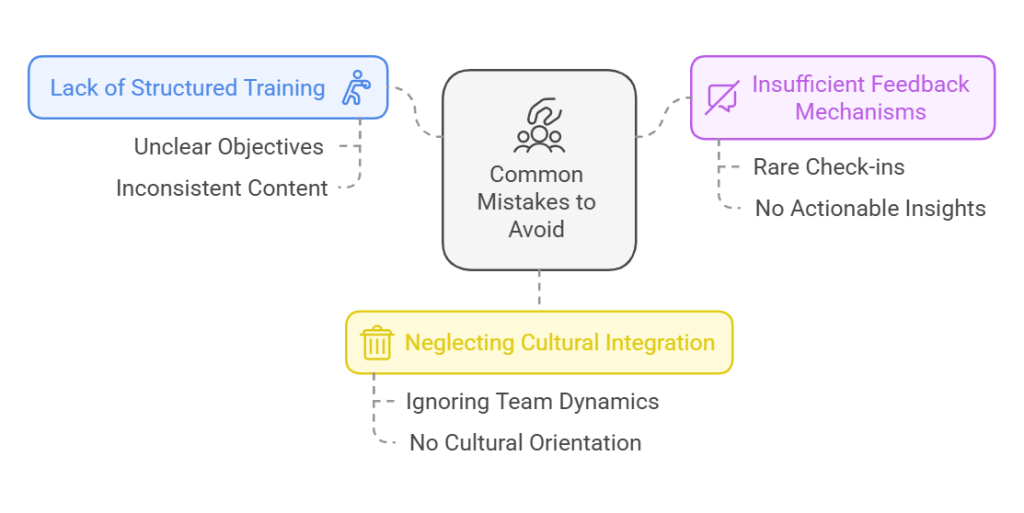Learn how to onboard employees like a pro! Discover best practices, tips, and tools to ensure a smooth transition and set your new hires up for success.
Are you tired of investing time and resources into new hires, only to see them leave or underperform? Do you struggle to create an onboarding process that truly sets your employees up for success? You’re not alone. Many organizations face these same challenges, but the good news is that there is a solution.
In this blog, we’ll discuss the importance of onboarding with a development focus and provide practical tips for creating an effective onboarding process that drives employee growth and retention.
The Cost of Poor Onboarding
Poor onboarding can have serious consequences for your organization. According to a study by Glassdoor, the average cost of replacing an employee is around $4,000. Additionally, a study by Gallup found that employees who have a poor onboarding experience are twice as likely to look for new job opportunities.
On the other hand, effective onboarding can lead to increased employee satisfaction, reduced turnover rates, and improved job performance.
What is Onboarding with a Development Focus?
Onboarding with a development focus is an approach that prioritizes the growth and development of new employees. It’s a holistic process that goes beyond just teaching job-specific skills and instead focuses on helping employees develop the skills, knowledge, and behaviors needed to succeed in their role and advance in their careers.
Key Components of an Effective Onboard Employees Process
So, what does an effective onboarding process with a development focus look like? Here are some key components to consider:
1. Clear Communication
Clear communication is essential for setting expectations and ensuring that new employees understand their role, responsibilities, and goals. This includes providing regular feedback, coaching, and mentoring.
2. Personalized Learning Plans
Every employee learns differently, so it’s essential to create personalized learning plans that cater to their individual needs and learning style.
3. Job Shadowing and Mentorship
Job shadowing and mentorship programs can help new employees learn from experienced colleagues and gain valuable insights into the organization’s culture and values.
4. Regular Check-Ins
Regular check-ins with managers and HR can help new employees stay on track, address any challenges or concerns, and receive feedback on their progress.
5. Feedback and Coaching
Feedback and coaching are essential for helping new employees develop the skills and behaviors needed to succeed in their role.
Best Practices for Implementing an Effective Onboarding Process
Here are some best practices for implementing an effective onboarding process with a development focus:
1. Start Before Day One
Send new employees a welcome packet or email with information about the company culture, benefits, and expectations.
2. Create a Buddy System
Assign new employees a buddy or mentor who can show them the ropes and provide support during the onboarding process.
3. Use Technology to Enhance the Onboarding Experience
Use digital tools and platforms to provide new employees with access to training materials, company information, and feedback.
4. Make it Interactive
Use interactive activities such as gamification, role-playing, and group discussions to make the onboarding process more engaging and fun.
5. Monitor Progress and Adjust
Monitor new employees’ progress and adjust the onboarding process as needed to ensure that they’re receiving the support and resources they need to succeed.
You Must Read
Employee Development Plans 2025: How to Tailor Them for Every Role
5 Signs Your Team Needs Immediate Sales Training
Common Mistakes to Avoid
Here are some common mistakes to avoid when implementing an onboarding process with a development focus:

1. Information Overload
Avoid overwhelming new employees with too much information at once. Instead, provide them with a clear and concise overview of the company and their role.
2. Lack of Feedback
Provide new employees with regular feedback and coaching to help them develop the skills and behaviors needed to succeed in their role.
3. Inadequate Training
Provide new employees with comprehensive training that covers all aspects of their role and responsibilities.
4. Poor Communication
Communicate clearly and regularly with new employees to ensure that they understand their role, responsibilities, and expectations.
Frequently Asked Questions
Q: What is the average cost of replacing an employee?
A: The average cost of replacing an employee is around $4,000.
Q: How long does the onboarding process typically last?
A: The onboarding process can last anywhere from a few weeks to several months.
Q: What is the most important aspect of an effective onboarding process?
A: The most important aspect of an effective onboarding process is clear communication. This includes providing regular feedback, coaching, and mentoring to help new employees understand their role, responsibilities, and expectations.
Q: How can technology enhance the onboarding experience?
A: Technology can enhance the onboarding experience by providing new employees with access to training materials, company information, and feedback through digital platforms and tools.
Q: What is the benefit of assigning a buddy or mentor to new employees?
A: Assigning a buddy or mentor to new employees can provide them with a point of contact for questions and concerns, as well as help them navigate the company culture and learn from experienced colleagues.
Conclusion
Effective onboarding is critical for driving employee growth and retention. By prioritizing development and creating a personalized onboarding experience, you can set your new employees up for success and help them thrive in their roles. Remember to avoid common mistakes such as information overload, lack of feedback, inadequate training, and poor communication. With the right approach, you can create an onboarding process that truly drives business results.
